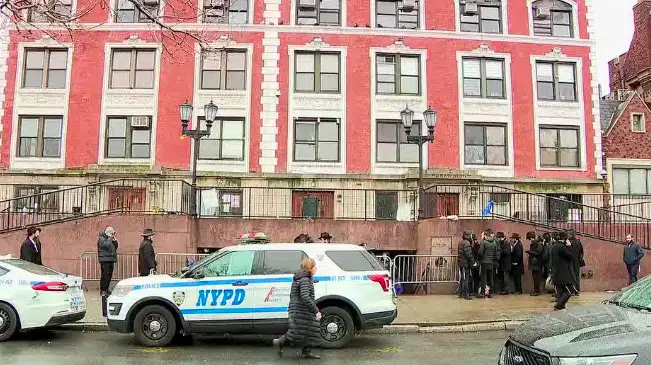A notable synagogue in Brooklyn that serves as the central location for the Chabad-Lubavitch movement in Crown Heights became the focal point of a heated dispute, culminating in a brawl between worshippers and the New York Police Department (NYPD). The conflict arose when a secret underground tunnel was discovered, leading to a violent protest when community leaders attempted to seal it off. The tunnel, reportedly constructed without official permission by a group of young men, originated in the basement of an adjacent building and connected to the synagogue, sparking controversy within the community.
According to Motti Seligson, a spokesperson for Chabad, the unauthorized construction of the tunnel was deemed a rogue act of vandalism by misguided individuals. The protestors, who supported the tunnel, argued that they were implementing an expansion plan long envisioned by Rebbe Menachem Mendel Schneerson, the former head of the Chabad movement who passed away in 1994. Those backing the tunnel believed it was a way to address the overcrowding issue in the basement synagogue and accused community leaders of a delayed response to the space needs. Notably, some supporters held messianic beliefs that Schneerson was still alive.
The tensions surrounding the tunnel escalated on a day when a cement truck arrived to seal the opening. In response, protestors staged a demonstration, tearing off the wooden siding of the synagogue. The NYPD was called in to respond to the disorderly group, trespassing, and property damage. Officers attempted to disperse the protestors and detain individuals involved in the construction of the tunnel. The situation intensified when some congregants, witnessing the arrests, reacted strongly, resulting in a chaotic scene.
Videos shared on social media captured the tumultuous events, showing a confrontational atmosphere between the NYPD and onlookers, mainly young men. Amid the chaos, a police officer appeared to deploy an irritating spray to control the crowd. Ultimately, nine individuals, aged between 19 and 22, were arrested on charges including criminal mischief, reckless endangerment, and obstructing governmental administration. An additional three people received summonses for disorderly conduct.
The aftermath of the incident prompted an inspection by the Department of Buildings to assess potential structural damage caused by the tunnel’s construction. The iconic synagogue, a revered site within the Chabad-Lubavitch movement, remained closed off with police barricades as officials investigated the situation. The community expressed a mix of sentiments, with some lamenting the damage to the historic synagogue, while others contended that the tunnel project was necessary for the community’s expansion.
The dispute brought to light internal divisions within the Chabad-Lubavitch community, as differing perspectives on the tunnel’s construction highlighted broader ideological and practical disagreements. The incident underscored the challenges faced by religious communities when dealing with matters of governance, expansion, and maintaining the sanctity of sacred spaces.

